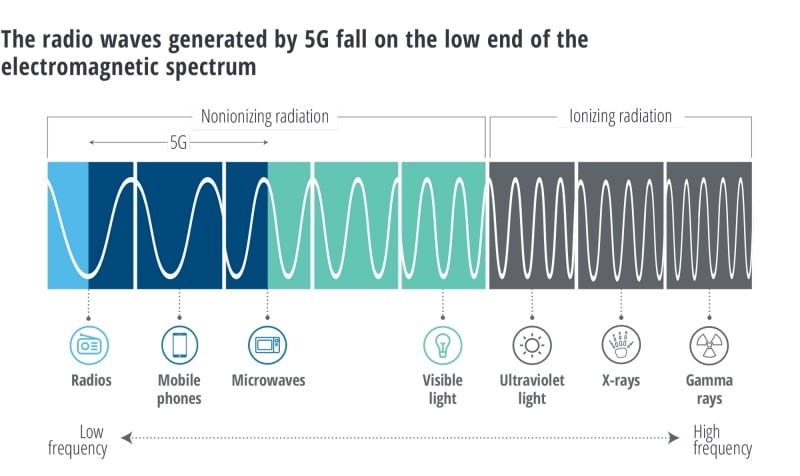All generations of mobile phone technology, including 5G, take the same familiar underlying approach. A mobile network consists of a nationwide grid of cell sites. These sites feature transmitters that generate radio waves, which are received by a mobile phone’s antenna.
The radio waves generated by mobile networks, TV stations, and radio stations are not harmful. In the electromagnetic spectrum in which radiation exists, radio waves fall on the low-frequency, very low-energy end. Such radiation is sometimes referred to as nonionizing radiation. This contrasts with radiation such as X-rays, gamma rays, and some types of ultraviolet light, which fall into the high-frequency, very high-energy end. These types of radiation are referred to as ionizing radiation, so-called because it has sufficient energy to damage DNA by removing electrons from atoms, potentially leading to cancer.

5G has lower power outputs than prior technology and other radio wave-based services due to the below reasons:
- 0.1-watt output for pico-cells (200 watts for most powerful towers, up to 100,000 watts for long-range TV and radio towers).
- 0.001 – 1 watt emissions for 5G phones in regular modes, due partly to proximity to base stations.
- No power emission from 5G base stations when not in use. This is not the case with earlier generations.
- Beam-forming, a transmission technique new to 5G, lowers the chance of passive exposure to (low-power) radio waves.
